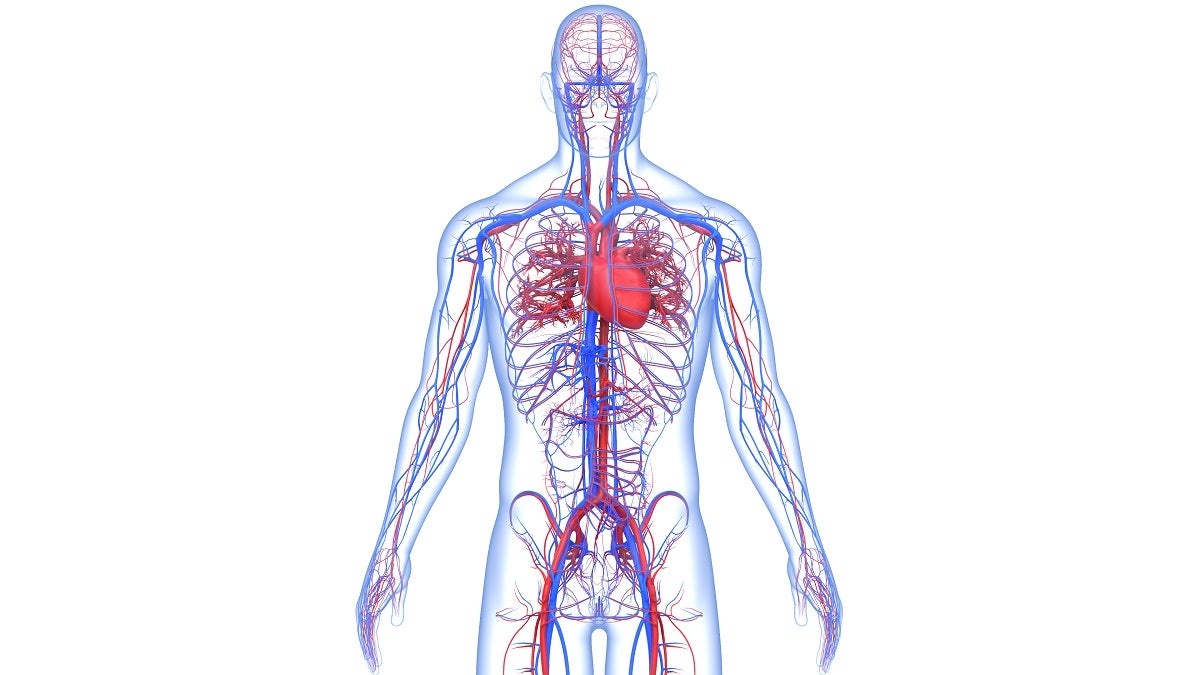Your Cardiovascular Health
March 5, 2024
Categories: Health & Wellness, Cardiovascular Health, Men's Health, Women's Health
Anatomy of the Cardiovascular System
Think of your vascular system as the body’s plumbing system of vessels that are attached to your heart and carry blood throughout your body. The vascular system includes these vessels:
- Arteries, which carry oxygen-rich blood and nutrients from your heart to your tissues by way of your capillaries. The main artery from your heart is the aorta — your “water main.”
- Veins carry blood containing carbon dioxide and waste away from the tissues of your body and then return the blood to your heart.
- Capillaries are the tiny tubal links between your tissues and your small veins and arteries.
The term cardiovascular includes the vascular system plus the heart. A common cause of cardiovascular disease is the buildup of plaque (fat and cholesterol) that narrows or completely blocks the flow of blood in your arteries or veins.
Cardiovascular disease often leads to a heart attack and other conditions that affect the heart. When arteries to the brain are blocked, the health of the brain can be affected. One example of this type of blockage can result in a stroke.
While genetics may play a part in some types of cardiovascular disease, the most typical causes of cardiovascular disease are within a person’s control.
Possible Signs of Cardiovascular Disease
There could be other medical causes of these warning signs, but they are the most common signs of possible cardiovascular disease:
- Belly measuring 40+ inches for men or 35+ inches for women
- Cold extremities (hands or feet)
- Extremity hair loss
- Erectile dysfunction
- Non-healing leg sores
- Shortness of breath with mild exertion
Risk Factors
It’s important to realize there are non-modifiable risk factors and modifiable risk factors for cardiovascular disease.
Non-modifiable risk factors include facts about you that you cannot change, such as your age, race, gender, and genetics.
Modifiable risk factors are facts about your lifestyle that you can change or control, such as smoking, lipid levels, blood pressure, diabetes, obesity, and activity level.
Two of these risk factors are worth emphasizing:
Smoking affects every type of artery, including the aorta, and promotes the formation of plaque and fatty deposits leading to cardiovascular disease. Do not smoke.
Obesity — a disorder that involves having too much body fat — has become an epidemic in our country. Since 1999, the prevalence of obesity in the U.S. has risen from 30.5% to 41.9%. It is important to manage your diet and weight.
10 Ways to Reduce Your Cardiovascular Risk
- Know your risk for developing cardiovascular disease. An online calculator, such as one at the American Heart Association or the American College of Cardiology, can be helpful in determining your risk. It will consider your family and personal health history as well as other factors, both modifiable and unmodifiable.
- Manage your weight and aim for a body mass index of less than 25 (BMI˂25).
- Eat a heart-healthy diet that includes fruits, vegetables, legumes, wholegrains, nuts, oily fish (salmon and tuna), some vegetable oils (corn, soy, canola, olive), seafood, and poultry. Remove all fat and skin from poultry.
- Avoid processed foods (e.g., fast food) and processed meats, such sausage, ham, and salami.
- Limit your intake of red meats, such as beef, veal, mutton, lamb, and pork.
- Avoid foods with added sugars or refined sources of carbohydrates. French fries are an example.
- Eliminate sugary drinks and foods. They may not have fat, but they have carbohydrates, which can be converted to fat in the body!
- Eliminate tobacco and alcohol, which increases blood pressure and may increase triglycerides.
- Participate in moderate exercise for at least 150 minutes per week.
- If you have any medical conditions that require treatment, follow your doctor’s recommendations for managing them.
Diet: Special Items
- Fresh garlic has been found to lower total cholesterol and LDL (low-density lipoprotein or “bad”) cholesterol.
- Some studies show vitamin E to be an antioxidant, helping to protect against LDL cholesterol.
- Green tea is thought to prevent the buildup of fatty deposits in the arteries. It may also increase blood flow by dilating vessels.
I encourage all my patients to do whatever it takes to improve their health by modifying their lifestyle. Doing so may mean the difference between a healthy, meaningful life or a premature death.
Visit our website to learn more about Trinity Health’s heart and vascular care.



